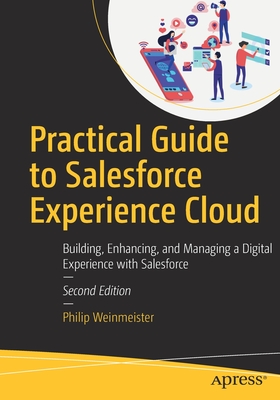Practical Model-Based Testing: A Tools Approach
暫譯: 實用模型導向測試:工具方法
Mark Utting, Bruno Legeard
- 出版商: Morgan Kaufmann
- 出版日期: 2006-11-27
- 售價: $2,920
- 貴賓價: 9.5 折 $2,774
- 語言: 英文
- 頁數: 456
- 裝訂: Hardcover
- ISBN: 0123725011
- ISBN-13: 9780123725011
-
相關分類:
Unit Test 單元測試
海外代購書籍(需單獨結帳)
買這商品的人也買了...
-
 TCP/IP Illustrated, Volume 1: The Protocols (Hardcover)
TCP/IP Illustrated, Volume 1: The Protocols (Hardcover)$1,230$1,205 -
 Windows 程式設計 (Programming Windows, 5/e)
Windows 程式設計 (Programming Windows, 5/e)$990$782 -
 Windows 驅動程式設計指南 (Programming the Microsoft Windows Driver Model, 2/e)
Windows 驅動程式設計指南 (Programming the Microsoft Windows Driver Model, 2/e)$890$703 -
 深入淺出設計模式 (Head First Design Patterns)
深入淺出設計模式 (Head First Design Patterns)$880$695 -
 Java 認證 SCJP 5.0 猛虎出閘
Java 認證 SCJP 5.0 猛虎出閘$650$514 -
 Ivor Horton 的 C++ 程式設計手冊第三版 (Ivor Horton's Beginning ANSI C++: The Complete Language, 3/e)
Ivor Horton 的 C++ 程式設計手冊第三版 (Ivor Horton's Beginning ANSI C++: The Complete Language, 3/e)$690$538 -
 ASP.NET 2.0 深度剖析範例集
ASP.NET 2.0 深度剖析範例集$650$507 -
 SQL 語法範例辭典
SQL 語法範例辭典$550$468 -
 專案管理黑皮書
專案管理黑皮書$270$213 -
 Microsoft Office SharePoint Server 2007 新一代企業 Web 解決方案(第一集)
Microsoft Office SharePoint Server 2007 新一代企業 Web 解決方案(第一集)$690$545 -
 Linux 驅動程式, 3/e (Linux Device Drivers, 3/e)
Linux 驅動程式, 3/e (Linux Device Drivers, 3/e)$980$774 -
 Visual C# 2005 建構資訊系統實戰經典教本
Visual C# 2005 建構資訊系統實戰經典教本$650$507 -
 $990UML 2 Certification Guide: Fundamental & Intermediate Exams (Paperback)
$990UML 2 Certification Guide: Fundamental & Intermediate Exams (Paperback) -
 Windows Vista 使用手冊
Windows Vista 使用手冊$490$417 -
 深入淺出物件導向分析與設計 (Head First Object-Oriented Analysis and Design)
深入淺出物件導向分析與設計 (Head First Object-Oriented Analysis and Design)$880$695 -
 ASP.NET AJAX 經典範例 100─使用 VB
ASP.NET AJAX 經典範例 100─使用 VB$750$593 -
 C++ Primer, 4/e (中文版)
C++ Primer, 4/e (中文版)$990$891 -
 ASP.NET AJAX 應用剖析立即上手
ASP.NET AJAX 應用剖析立即上手$580$452 -
 軟體測試實務講座─來自矽谷的技術經驗與心得分享
軟體測試實務講座─來自矽谷的技術經驗與心得分享$290$226 -
 ASP.NET AJAX 經典範例 100─使用 VC#
ASP.NET AJAX 經典範例 100─使用 VC#$750$593 -
 現代嵌入式系統開發專案實務-菜鳥成長日誌與專案經理的私房菜
現代嵌入式系統開發專案實務-菜鳥成長日誌與專案經理的私房菜$600$480 -
 $299The Art of Agile Development (Paperback)
$299The Art of Agile Development (Paperback) -
 $1,488C++ GUI Programming with Qt 4, 2/e (Hardcover)
$1,488C++ GUI Programming with Qt 4, 2/e (Hardcover) -
 建構嵌入式 Linux 系統 (Building Embedded Linux Systems, 2/e)
建構嵌入式 Linux 系統 (Building Embedded Linux Systems, 2/e)$780$616 -
 Linux 驅動程式開發實戰 (Essential Linux Device Drivers)
Linux 驅動程式開發實戰 (Essential Linux Device Drivers)$750$593
商品描述
Description
This book gives a practical introduction to model-based testing, showing how to write models for testing purposes and how to use model-based testing tools to generate test suites. It is aimed at testers and software developers who wish to use model-based testing, rather than at tool-developers or academics.
The book focuses on the mainstream practice of functional black-box testing and covers different styles of models, especially transition-based models (UML state machines) and pre/post models (UML/OCL specifications and B notation). The steps of applying model-based testing are demonstrated on examples and case studies from a variety of software domains, including embedded software and information systems.
From this book you will learn:
The basic principles and terminology of model-based testing
How model-based testing differs from other testing processes
How model-based testing fits into typical software lifecycles such as agile methods and the Unified Process
The benefits and limitations of model-based testing, its cost effectiveness and how it can reduce time-to-market
A step-by-step process for applying model-based testing
How to write good models for model-based testing
How to use a variety of test selection criteria to control the tests that are generated from your models
How model-based testing can connect to existing automated test execution platforms such as Mercury Test Director, Java JUnit, and proprietary test execution environments
Table of Contents
1 The Challenge; 2 The Pain and the Gain; 3 A Model of your System; 4 Selecting your Tests; 5 Testing from Finite State Machines; 6 Testing from Pre/Post Models; 7 Testing from UML Models; 8 Making Tests Executable; 9 The GSM 11.11 Case Study; 10 The ATM Case Study; 11 Putting it into Practice; Appendix; Index
商品描述(中文翻譯)
**描述**
本書提供了模型為基礎的測試的實用介紹,展示了如何為測試目的編寫模型,以及如何使用模型為基礎的測試工具來生成測試套件。它的目標讀者是希望使用模型為基礎的測試的測試人員和軟體開發人員,而非工具開發者或學術界人士。
本書專注於功能性黑盒測試的主流實踐,涵蓋了不同風格的模型,特別是基於轉換的模型(UML 狀態機)和前/後模型(UML/OCL 規範和 B 符號)。應用模型為基礎的測試的步驟通過來自各種軟體領域的範例和案例研究進行演示,包括嵌入式軟體和資訊系統。
從本書中,您將學到:
- 模型為基礎的測試的基本原則和術語
- 模型為基礎的測試與其他測試過程的不同之處
- 模型為基礎的測試如何融入典型的軟體生命週期,如敏捷方法和統一過程
- 模型為基礎的測試的優點和限制、其成本效益以及如何縮短上市時間
- 應用模型為基礎的測試的逐步過程
- 如何為模型為基礎的測試編寫良好的模型
- 如何使用各種測試選擇標準來控制從您的模型生成的測試
- 模型為基礎的測試如何與現有的自動化測試執行平台(如 Mercury Test Director、Java JUnit 和專有測試執行環境)連接
**目錄**
1. 挑戰
2. 痛苦與收穫
3. 您系統的模型
4. 選擇您的測試
5. 從有限狀態機進行測試
6. 從前/後模型進行測試
7. 從 UML 模型進行測試
8. 使測試可執行
9. GSM 11.11 案例研究
10. ATM 案例研究
11. 實踐應用
附錄
索引






















